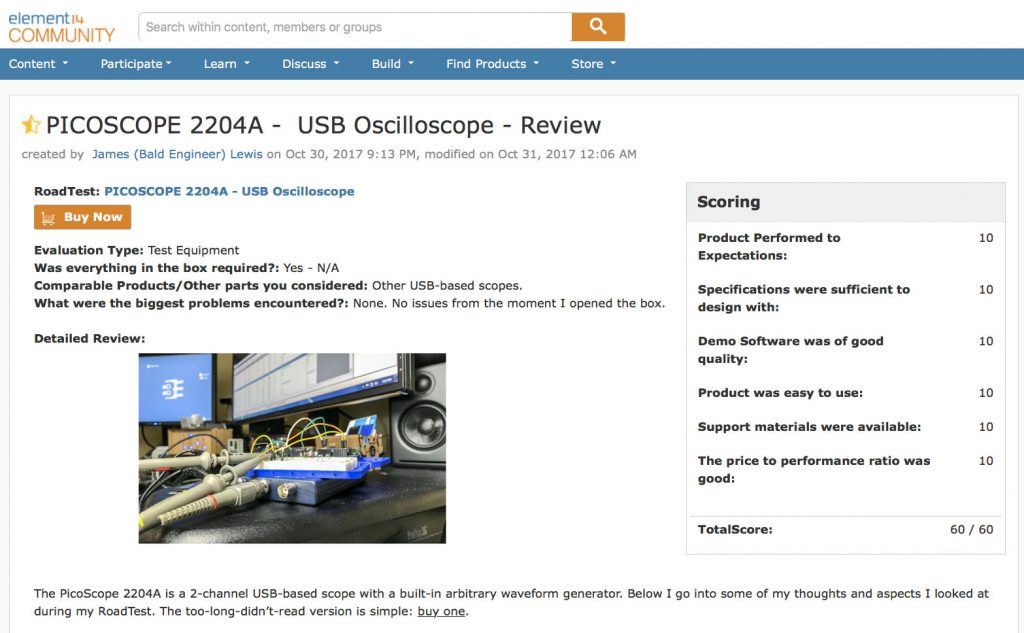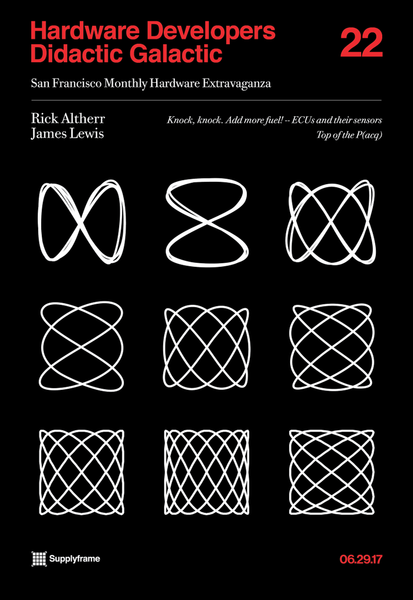Previously, I wrote up a hands-on with the PicoScope 2204A. At the time I only spent a few minutes with the device. I used it to “debug” an I2C bus between an Arduino and OLED screen. Since that initial hands-on, I’ve used the PicoScope in my lab. Most notably, I hosted another “hands-on” via an AddOhms Live Stream. I used it for another live stream where I talked about op-amps. Unfortunately, the video isn’t watchable due to some technical difficulties.
However, both of those activities plus debugging a new project I’m working on, gave me a chance to understand this humble USB-based oscilloscope. Now that I’ve held well over a month of bench time with it, I can say I am happy with the 2204A. If you’re looking for a low-cost, but fully featured oscilloscope, give the PicoScope 2204A a consideration. For more details on why I feel that way, click the button below to see my full write review on element14.
Full PicoScope 2204A Review on element14



